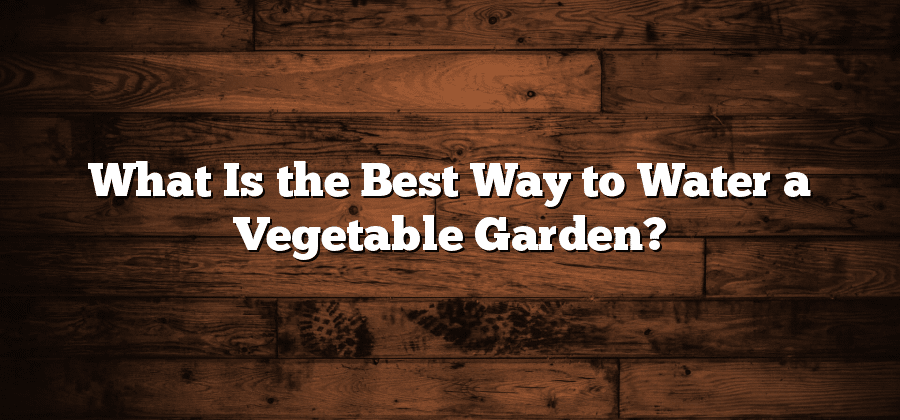Importance of Proper Watering for Vegetable Gardens
Proper watering is crucial for the health and success of vegetable gardens. Without sufficient water, plants may become stressed, wilt, and even die. On the other hand, over-watering can lead to root rot, nutrient leaching, and the growth of harmful fungi and diseases.
Water plays a vital role in every aspect of plant growth and development. It is responsible for transporting nutrients and minerals from the soil to the plant’s cells, supporting photosynthesis, and maintaining turgidity. Adequate hydration ensures that vegetables receive the necessary nourishment to produce high-quality yields. As a responsible gardener, it is important to understand the water requirements of different vegetable plants and implement appropriate watering practices to optimize growth and productivity.
Understanding the Water Needs of Vegetable Plants
Vegetable plants have varying water needs depending on their type, stage of growth, and environmental conditions. Understanding these water requirements is crucial for maintaining the health and productivity of your vegetable garden.
Generally, most vegetable plants require about 1-1.5 inches of water per week. However, this can vary depending on factors such as the climate, soil type, and plant variety. It is important to note that overwatering can be just as harmful as underwatering for vegetable plants. Excessive watering can lead to the development of diseases, root rot, and nutrient leaching. On the other hand, insufficient watering can result in stunted growth, wilting, and poor fruit development. Therefore, it is essential to strike a balance and ensure that your vegetable plants are adequately hydrated without drowning them.
Choosing the Right Time of Day to Water
When it comes to watering your vegetable garden, choosing the right time of day can make a significant difference in the health and productivity of your plants. The ideal time to water your garden is in the early morning, before the sun is fully up and temperatures start to rise. This allows the water to penetrate the soil and reach the roots of the plants without evaporating too quickly. Watering in the morning also helps to prevent the growth of fungal diseases, as the foliage has the opportunity to dry out before nighttime.
Avoid watering your garden during the hottest part of the day, typically between 10 am and 4 pm. The intense heat can cause the water to evaporate quickly, depriving your plants of the moisture they need to thrive. Additionally, watering during this time can lead to the burning of foliage and the scorching of tender young plants. If you find it necessary to water during the day, try to do so in the late afternoon or early evening when temperatures start to cool down. This will give the water a chance to soak into the soil and be absorbed by the plant roots before nightfall.
Selecting the Best Watering Method for Your Garden
Drip irrigation, sprinklers, soaker hoses – with so many options, it can be overwhelming to choose the best watering method for your vegetable garden. However, taking the time to make the right choice is crucial in ensuring healthy growth and bountiful harvests.
One important factor to consider when selecting a watering method is the specific needs of your vegetable plants. Some plants, such as tomatoes and cucumbers, prefer consistent moisture, while others, like carrots and potatoes, require less frequent watering. By understanding the water requirements of different vegetables, you can tailor your watering method to meet their specific needs.
Determining the Ideal Watering Schedule
Determining the ideal watering schedule for your vegetable garden is essential for achieving healthy and bountiful plants. While the specific watering needs may vary depending on the type of vegetables and the surrounding climate, there are some general guidelines that can help you establish a reliable schedule.
First and foremost, it is crucial to consider the soil moisture level. Before watering, check the soil by sticking your finger about an inch into the ground. If it feels dry, then it’s time to water. However, if it still feels slightly moist, you can wait a day or two before watering again. Overwatering can lead to nutrient leaching and root rot, so it’s important to strike a balance.
Secondly, take into account the weather conditions. During periods of intense heat or drought, your plants will require more frequent watering. Conversely, during cooler and rainy periods, you may need to water less frequently. Monitoring local weather forecasts can help you adjust your watering schedule accordingly and ensure your plants receive the appropriate amount of moisture.
Establishing an ideal watering schedule can greatly contribute to the overall success of your vegetable garden. By considering factors such as soil moisture and weather conditions, you can provide your plants with the optimum amount of water, promoting healthy growth and maximizing their yield.






